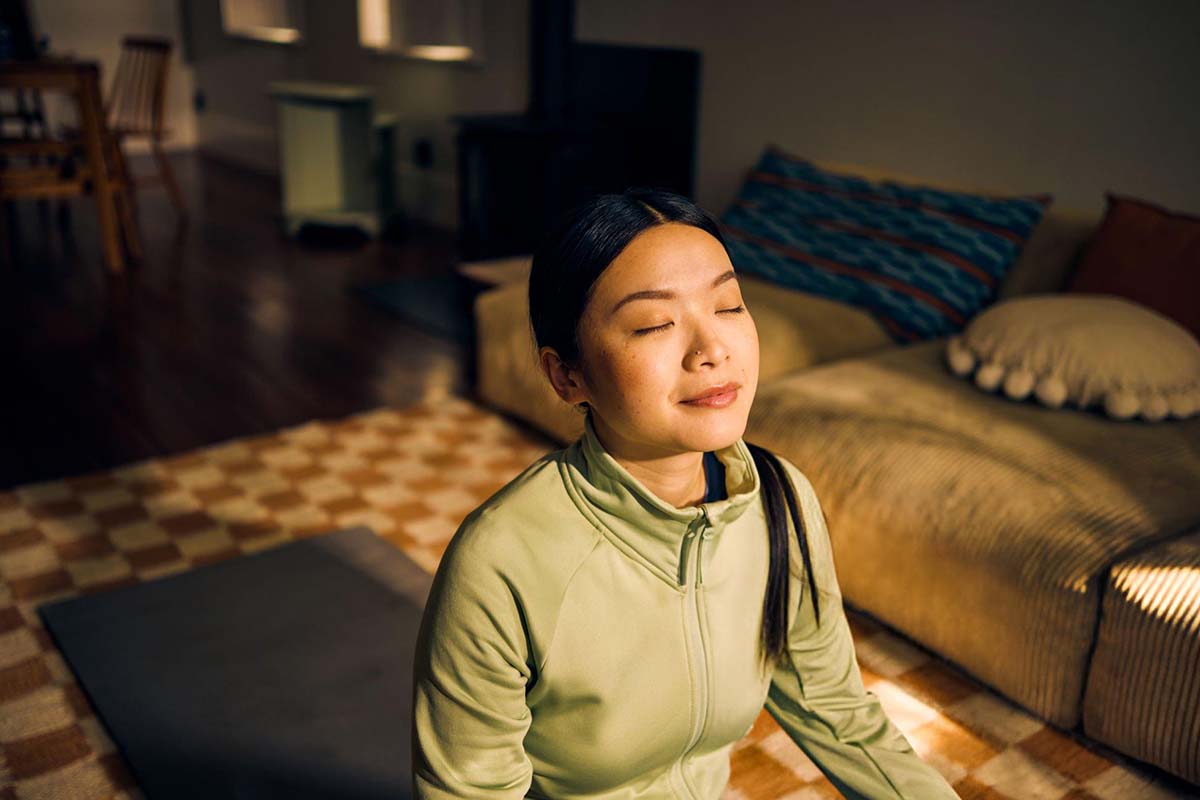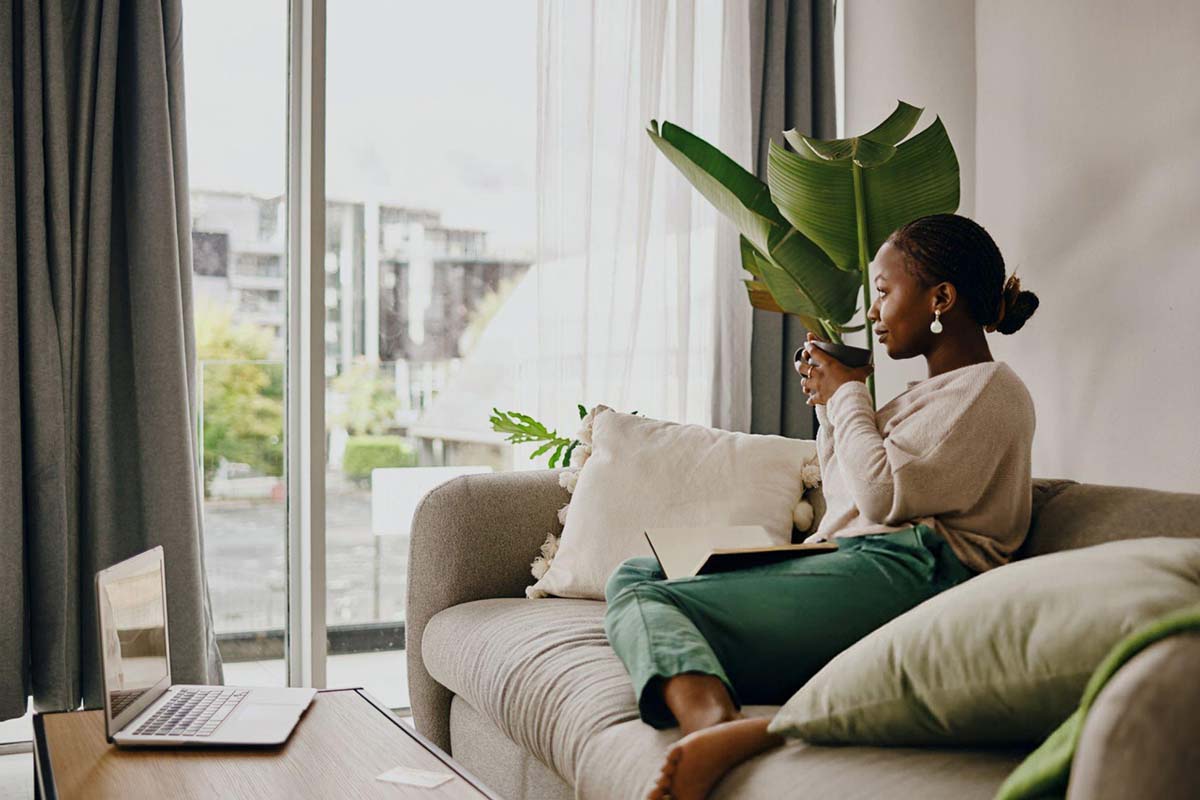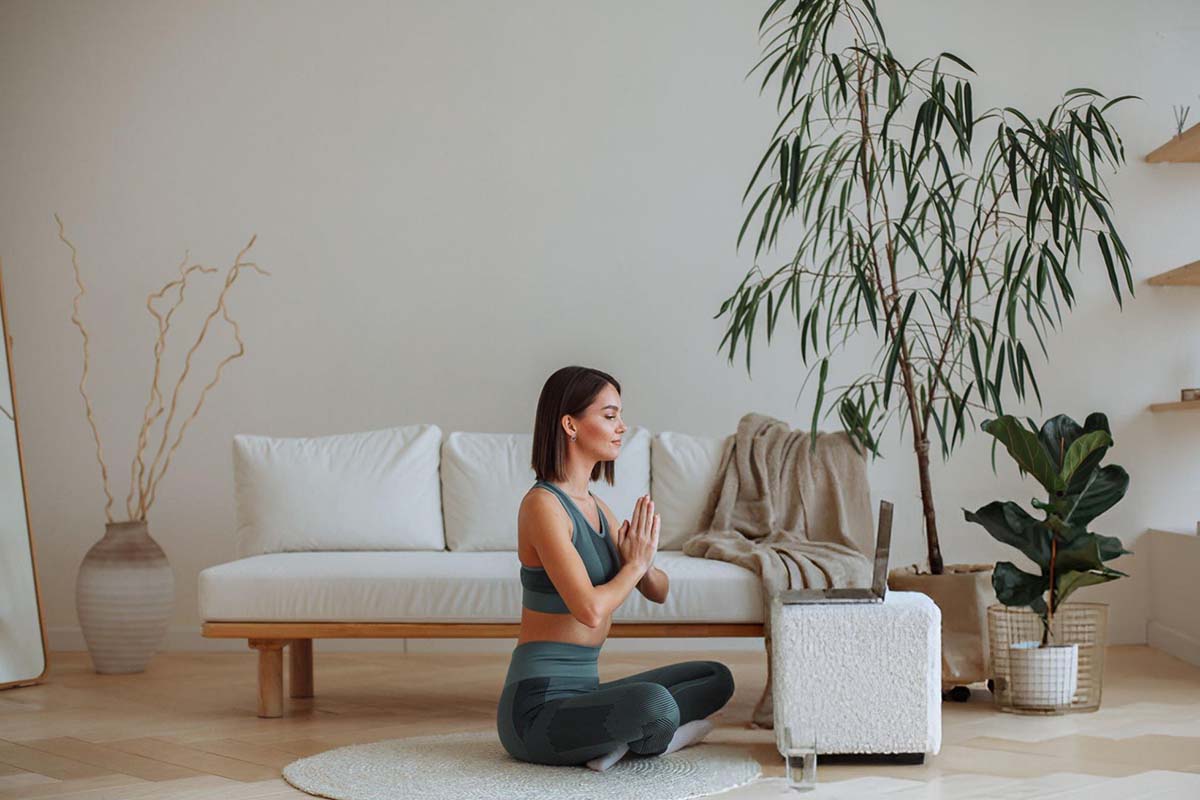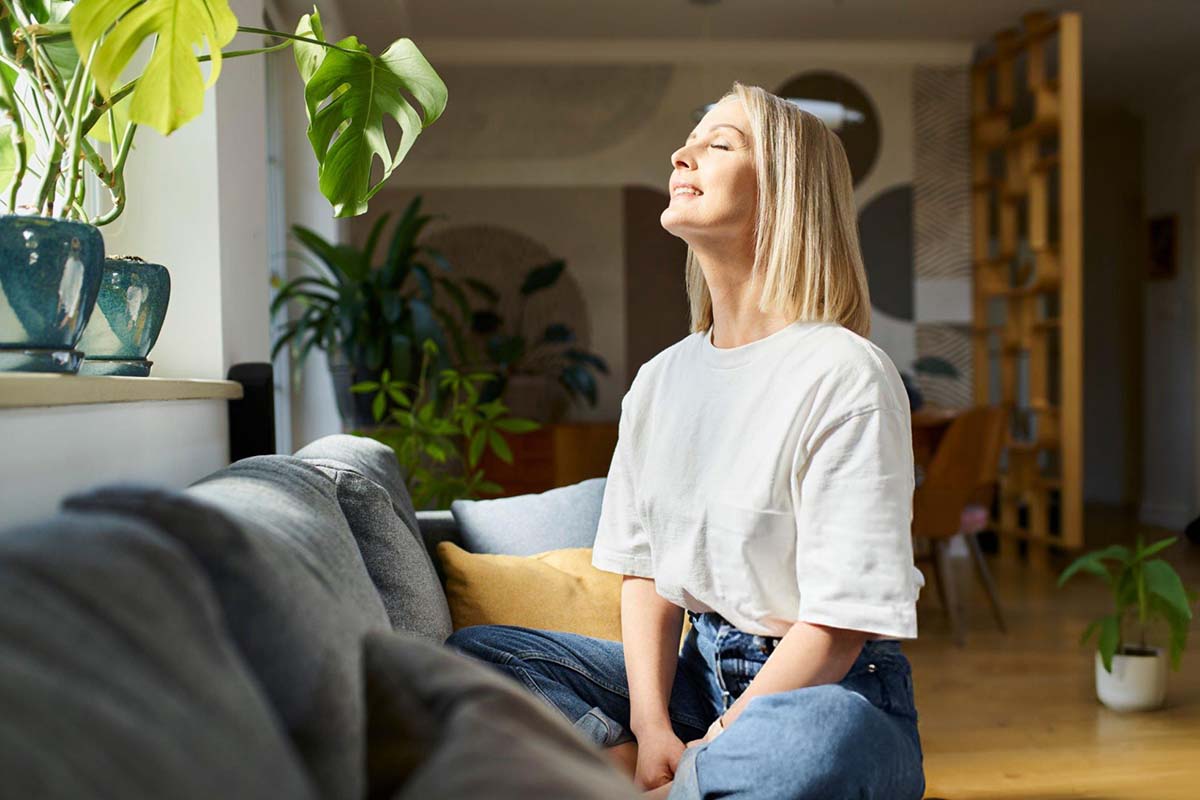Wellness Trends for 2025: A series of posts designed to uncover the most progressive concepts in wellness for the year ahead. Number Eight: Restorative Home Design.
In the pursuit of wellness, many people are turning their attention homeward. Beyond aesthetics, today’s homeowners and designers are focused on creating living spaces that promote relaxation, reduce stress, and enhance well-being—a concept known as restorative home design. Blending principles from biophilic design, sustainability, and mindfulness, restorative home design aims to transform the home into a sanctuary, where each room is thoughtfully crafted to support physical and mental health.
This guide explores the elements and benefits of restorative home design, offering insight into how to create spaces that are both beautiful and beneficial to well-being.

What is Restorative Home Design?
Restorative home design is an approach to interior design that emphasizes creating environments that are not only visually appealing but also nurturing. This design philosophy focuses on incorporating elements that support relaxation, mental clarity, and physical comfort, ultimately reducing stress and promoting health. Drawing from a variety of disciplines, including psychology, ecology, and sustainability, restorative home design considers how a space can positively impact the people living in it.
Unlike traditional design, which often prioritizes style or trendiness, restorative home design places well-being at the center. This means choosing materials, colors, lighting, and layouts that foster a sense of calm and connectedness.
The Benefits of Restorative Home Design
Creating a restorative environment at home offers several significant benefits, particularly as more people work and spend time within their own four walls. Here are some of the most notable advantages:
Reduced Stress and Anxiety: Studies show that exposure to natural elements, soft lighting, and calming colors can significantly reduce stress. A home designed with relaxation in mind can help mitigate the pressures of daily life.
Improved Focus and Productivity: For those who work from home, restorative design can help create a clear boundary between work and leisure spaces, enhancing productivity. Strategic use of lighting and color can boost focus, while comfortable furniture encourages better posture and concentration.
Enhanced Sleep Quality: A restful bedroom environment, with optimal lighting, temperature, and air quality, can improve sleep patterns. By incorporating elements that promote relaxation, restorative design supports a deeper, more restorative sleep.
Increased Physical Comfort and Health: Restorative home design often prioritizes ergonomic furniture, non-toxic materials, and good ventilation—all of which contribute to physical comfort and better health. These choices help reduce allergens, improve air quality, and support physical well-being.
Fostered Connection with Nature: By integrating elements from nature, restorative home design brings the outdoors in, which has been shown to improve mood and boost immune function. Even a small amount of greenery or exposure to natural light can make a significant difference in well-being.

Core Elements of Restorative Home Design
To create a truly restorative environment, several key elements should be considered. Each of these components contributes to the overall wellness-focused ambiance of a space.
1. Biophilic Design and Natural Elements
Biophilic design is based on the idea that humans have an innate need to connect with nature. By incorporating natural elements—such as plants, natural light, and water features—into the home, designers can create a space that promotes relaxation and reduces stress.
Indoor Plants: Indoor plants are among the easiest ways to introduce biophilic design to a home. Plants like peace lilies, snake plants, and spider plants purify the air, increase humidity, and create a calming environment.
Natural Light: Exposure to natural light has been shown to improve mood, boost vitamin D levels, and regulate sleep patterns. Large windows, skylights, and glass doors are excellent ways to maximize sunlight, while mirrors can be used to reflect light throughout a room.
Water Features: The sound of water has a calming effect on the mind. Small indoor fountains, fish tanks, or even recorded water sounds can create a soothing atmosphere, perfect for meditation or relaxation spaces.
2. Color Psychology
Colors play a crucial role in mood and energy levels. In restorative home design, the emphasis is on using colors that soothe rather than stimulate, creating an environment conducive to relaxation and focus.
Calming Colors: Soft, neutral shades—such as beige, light grey, and pastels—promote tranquility. Cool colors like soft blues and greens are often used in bedrooms and relaxation areas, as they can lower heart rates and reduce stress.
Warm Tones for Comfort: Warm tones, like soft pinks, terracotta, and earthy browns, evoke comfort and coziness. These colors work well in living rooms and communal areas, fostering a sense of warmth and togetherness.
Avoiding Overly Bright Colors: While vibrant colors can be stimulating, they’re best used as accents rather than dominant tones in restorative spaces. Small pops of color in artwork, textiles, or accessories can add interest without overwhelming a calming palette.
3. Ergonomics and Comfort
Physical comfort is essential to a restorative home. Ergonomically designed furniture supports physical health and helps prevent strain, making it easier to relax and unwind.
Supportive Furniture: Choosing supportive seating and work surfaces is particularly important for those who work from home. Ergonomic chairs, standing desks, and adjustable workspaces promote good posture, preventing back and neck pain.
High-Quality Bedding: In the bedroom, invest in high-quality mattresses and pillows. Memory foam, hybrid, or latex mattresses can improve sleep quality, as can pillows suited to your sleep style (side, back, or stomach).
Textiles and Layers: Soft textures, like plush rugs, linen sheets, and cozy blankets, create a sense of warmth and comfort. Layering textiles in living rooms and bedrooms encourages relaxation and adds visual interest.
4. Mindful Lighting Design
Lighting can either energize or calm a space. In restorative home design, mindful lighting choices enhance natural rhythms, creating different lighting levels for various times of day.
Adjustable Lighting: Dimmers, adjustable lamps, and soft overhead lights help to control brightness and set the mood for relaxation or focus. For instance, brighter light is ideal for workspaces, while dimmer lights are preferable for evening relaxation.
Circadian Lighting: Circadian lighting systems mimic natural sunlight patterns, gradually adjusting throughout the day. These lights support the body’s natural sleep-wake cycle, promoting alertness in the morning and relaxation at night.
Avoiding Harsh Fluorescents: Fluorescent lights can be overly bright and draining. Instead, opt for warm, soft lighting sources that contribute to a gentle, inviting ambiance.
5. Non-Toxic and Eco-Friendly Materials
The materials used in home design can impact indoor air quality and overall health. Restorative design emphasizes the use of non-toxic, eco-friendly materials that support both personal wellness and environmental sustainability.
Natural Finishes: Wood, stone, and other natural materials bring a sense of calm and connection to nature. Look for untreated or naturally finished options, which have lower VOC (volatile organic compound) emissions.
Eco-Friendly Paints: Many conventional paints contain VOCs, which can cause respiratory issues and irritate the skin. Eco-friendly or low-VOC paints reduce these risks, creating a safer environment for everyone in the household.
Sustainable Flooring: Flooring materials like bamboo, cork, or reclaimed wood are not only sustainable but also emit fewer toxins. These options add warmth and character to a room without compromising health.

Popular Restorative Home Design Trends
The concept of restorative home design has given rise to several trends that reflect our desire for calming, health-centered living spaces:
Minimalist and Clutter-Free Spaces: Minimalism aligns well with restorative design, as clutter-free environments promote mental clarity and reduce stress. Storage solutions, like built-in cabinets or modular furniture, can help maintain a clean and organized home.
Indoor-Outdoor Living: Merging indoor and outdoor spaces allows people to enjoy fresh air and natural views. Sliding doors, patio spaces, and large windows can create a seamless connection between the interior and exterior of the home.
Wellness Rooms: Wellness rooms or “calm corners” are dedicated spaces for relaxation, whether it’s a reading nook, meditation area, or home yoga studio. These areas offer a retreat from daily stress, providing a quiet space to recharge.
Aromatherapy and Scent Design: Aromatherapy can enhance the sense of tranquility in a home. Essential oil diffusers, scented candles, or herbal sachets provide subtle fragrances that contribute to a calming atmosphere.
How to Start Incorporating Restorative Design in Your Home
Transitioning to a restorative home doesn’t require a complete overhaul. Here are some small steps to start creating a wellness-focused environment:
Declutter and Organize: Begin by clearing unnecessary items to create a more open and airy space. An organized home is foundational to creating a calming environment.
Add Greenery: Bring in a few indoor plants to purify the air and introduce natural beauty. Low-maintenance options like pothos, succulents, or ferns can add life to any space without requiring extensive care.
Create a Calming Color Palette: Experiment with soft, natural tones that promote relaxation. Whether it’s painting an accent wall or adding new cushions, subtle changes in color can make a big difference.
Focus on Lighting: Invest in adjustable lighting options and consider circadian bulbs that mimic natural light. This can help regulate your mood and energy levels, especially during darker months. Consider adding floor lamps or table lamps with dimmable features in key areas like the living room or bedroom to create layers of lighting for various times of day.
Incorporate Natural Materials: Swap out synthetic materials for natural ones wherever possible. Opt for organic cotton or linen bedding, choose wood or rattan furniture, and incorporate natural stone or ceramics in décor items. These materials bring warmth and texture, enhancing the grounding effect of the space.
Designate a Relaxation Zone: Carve out a small area dedicated to relaxation. This could be a corner with a comfortable chair and a soft throw blanket, or a dedicated room for yoga and meditation. The key is to create a space free from distractions where you can unwind and recharge.
Reduce Noise Pollution: If possible, invest in soundproofing options like rugs, heavy curtains, or even acoustic panels in high-traffic areas. Soundproofing reduces noise pollution, which has been linked to increased stress levels, helping to create a quieter, more restful home environment.
The Future of Restorative Home Design
As the focus on mental health and wellness continues to grow, restorative home design is likely to expand. With advances in smart home technology, the concept of a wellness-centered home could soon include even more tailored options, such as:
Smart Air Quality Monitors: Devices that track indoor air quality in real time can help individuals adjust ventilation and reduce allergens, further promoting a healthy living environment.
Energy-Efficient and Sustainable Homes: Eco-friendly design elements, like solar power, energy-efficient appliances, and sustainable building materials, will become even more accessible, aligning restorative home design with environmental wellness.
Personalized Wellness Features: Imagine a home where lighting, temperature, and even sound are personalized based on your specific mood and wellness needs. AI-driven smart systems are on the horizon, offering fully customizable environments to support relaxation, focus, or energy levels.
Mental Wellness-First Architecture: The design and architecture industry may see an increase in wellness-first construction, where homes are designed with elements like ample daylight, natural ventilation, and restorative views from the outset. Future homes may integrate wellness as a standard rather than an option.
Cultivating Well-Being Through Design
Restorative home design represents a profound shift in how we view and shape our living spaces. It’s about more than creating an attractive home; it’s about fostering an environment that supports mental clarity, physical comfort, and emotional balance. As more people spend time within their own homes, the importance of these wellness-centered principles is becoming clear. A home that prioritizes rest, mindfulness, and connection to nature isn’t just a luxury—it’s a necessity for well-being in a fast-paced world.
By incorporating elements like natural light, calming colors, non-toxic materials, and ergonomic furnishings, individuals can transform their homes into sanctuaries that nourish the body and mind. Whether through small changes or a comprehensive redesign, restorative home design allows us to create spaces that enhance our quality of life and support a healthier, more balanced way of living. In a world where wellness is increasingly essential, designing for restoration is a powerful step toward a more mindful and rejuvenating daily experience.








